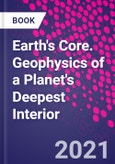Earth's Core: Geophysics of a Planet's Deepest Interior provides a multidisciplinary approach to Earth's core, including seismology, mineral physics, geomagnetism, and geodynamics. The book examines current observations, experiments, and theories; identifies outstanding research questions; and suggests future directions for study.
With topics ranging from the structure of the core-mantle boundary region, to the chemical and physical properties of the core, the workings of the geodynamo, inner core seismology and dynamics, and core formation, this book offers a multidisciplinary perspective on what we know and what we know we have yet to discover. The book begins with the fundamental material and concepts in seismology, mineral physics, geomagnetism, and geodynamics, accessible from a wide range of backgrounds. The book then builds on this foundation to introduce current research, including observations, experiments, and theories. By identifying unsolved problems and promising routes to their solutions, the book is intended to motivate further research, making it a valuable resource both for students entering Earth and planetary sciences and for researchers in a particular subdiscipline who need to broaden their understanding.
Please Note: This is an On Demand product, delivery may take up to 11 working days after payment has been received.
Table of Contents
1. Radial structure of Earth's core 2. Chemical and physical state of the core 3. Geodynamo and geomagnetic basics 4. Outer core dynamics 5. Boundary regions 6. Inner core explored with seismology 7. Inner core dynamics 8. Formation and evolution of the core 9. Future research goals








